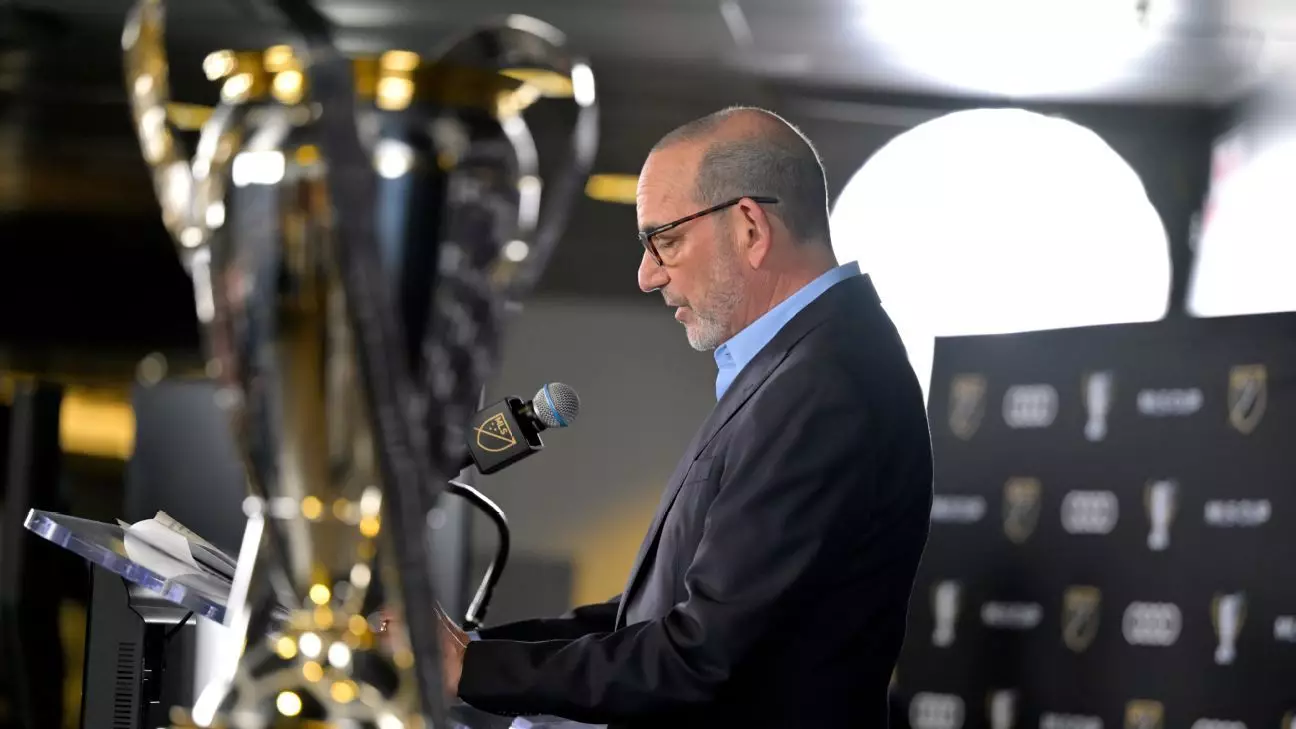As Major League Soccer (MLS) continues to grow in popularity and competitiveness, the league’s framework and structure are undergoing significant scrutiny. With an ever-increasing number of matches, rivalries, and tournaments on the horizon, the urgency to redefine the league calendar has never been more pressing. MLS Commissioner Don Garber’s recent address highlights not just the challenges posed by an overloaded schedule but also the potential strategic shifts that the league could embrace moving forward.
During his annual State of the League address, Commissioner Don Garber shared insights into the league’s evolving schedule, indicating that a shift towards aligning with the European calendar is firmly on the table. Historically, MLS has operated on a February to December timeline, an approach that poses unique challenges, especially as international tournaments such as the Club World Cup and various player commitments fill the summer months. Garber acknowledged that the potential transition to a fall/spring format has gained traction among stakeholders, although firm decisions are yet to be made. This willingness to explore alterations signifies a proactive approach in navigating the complexities of the current sports landscape.
The desire for alignment with global football trends is evident, as the Commissioner noted the ongoing discussions since the 2004-05 and 2014-15 seasons. However, as complexities grow, with the league now balancing multiple tournaments alongside its core games, the feasibility of this adjustment remains an open question. Prioritizing logistical efficiency and fan engagement while ensuring fair access for all teams will be a critical area of focus as the league evaluates its next steps.
Garber’s remarks shed light on the intricate web of tournaments that MLS must negotiate. The growing demands on teams to participate in events such as the U.S. Open Cup, Leagues Cup, and the Club World Cup create a congested competitive environment. With the looming shadow of the 2026 World Cup, Garber confirmed that MLS plans to pause regular play during this significant event. Such breaks can serve to refresh and refocus the league’s energy, yet they also raise concerns about how to manage team participation across this densely packed schedule.
An essential point in Garber’s address was the acknowledgment that not every team may have the opportunity to engage in all available tournaments, a fact that speaks volumes about the reality of resource allocation within the league. This prioritization raises questions about equity and competition: how can MLS maintain a commitment to its clubs while ensuring a level playing field amid limited slots for prestigious tournaments? Ultimately, this balancing act adds another layer of complexity for Garber and his team as they strive to elevate the league’s profile.
One significant factor bolstering MLS’s expanding reach is the extraordinary influence of global football icons, particularly Lionel Messi. Although Inter Miami faced early playoff elimination, Garber emphasized the unprecedented wave of interest triggered by Messi’s presence in the league. The swell in attendance and the heightened media attention have positive implications for sponsorship deals, fan engagement, and viewership, which collectively contribute to the league’s stature.
The Commissioner noted that Messi’s emotional connection to the league not only resonates with fans but also speaks to the broader narrative of MLS’s evolution into a prominent destination for elite talent. The challenge, however, lies in maintaining this momentum. Attracting and retaining global stars while nurturing homegrown talents is vital for the league’s future success. The ripple effects of a player like Messi can be profound, but sustainable growth requires a strategic commitment from MLS to create a distinct identity that players and fans can rally around.
Another pressing concern is MLS’s current partnership with Apple TV, an arrangement that has opened up new avenues for viewership but has also complicated traditional metrics of success. Garber commented on the intricacies of measuring audience engagement as the structure of broadcasts becomes increasingly multifaceted. Understanding the collective viewership across numerous games each weekend presents a unique challenge that they are still working to decipher.
In these early stages of this broadcasting venture, there is an evident push from Garber and his team to cultivate intentional viewership and create a more direct relationship with fans. While acknowledging the complexities of measuring success, it seems that MLS is committed to capitalizing on this partnership, aiming for sustained growth rather than quick gratification. As audiences continue to evolve, so too must MLS’s strategies in catering to a diverse and expanding fan base.
The future of MLS is both promising and daunting as it grapples with a crowded calendar and the ramifications of its strategic choices. Garber’s reflections reveal a league that is self-aware; one that recognizes its growing pains while actively seeking solutions that preserve its integrity and competitiveness. As MLS strives to define its place on the global stage in the wake of notable challenges, the ability to adapt and innovate will play a crucial role in shaping its legacy. Balancing the demands of an ambitious schedule while remaining true to its roots is undoubtedly the league’s most significant task moving forward.

